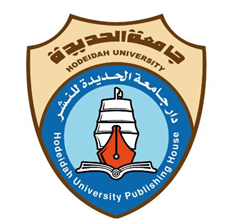Gas Chromatography–Mass Spectrometry Analysis of Melissa Officinal Leaves Extract and Evaluation of Its Biological Effects
DOI:
https://doi.org/10.59846/ajbas.v2i2.523Keywords:
Melissa officinalis, Antioxidant, Escherichia coliAbstract
The leaves of the Melissa officinalis plant were collected from the Aqra region in northern Iraq. Mosul Dam's medicinal plant development initiative is cataloged in the Directorate of Medicinal Plant Development, part of the Iraqi Ministry of Agriculture. The alcoholic extract of the leaves of the target plant was prepared using a soxlet device, and then the extract was analysis with GC-MS technology to find out the active compounds contained in the extract, and the analysis proved that it contains 18 compounds: (Butanoic acid, Propane, 2-Propen-1-ol, Ethylbenzene, Butane, 1-Butanol, Propanamide, p-Xylene, Silane, Ethanol, heptane, Triethoxysilanol, Propanoic acid, Verbenol, Hexadecanoic acid, Hexadecanoic acid, Benzenamine and Benzaldehyde). Then the alcoholic extract was used at concentrations of (200, 300, 400 and 500) µg/ml to study the antioxidant effectiveness on the free root DPPH and the experiment proved the ability of the extract to inhibit free radicals at all concentrations, the highest inhibition at a concentration of 500 µg/ml with an inhibition rate of 90.40% superior to the standard sample ascorbic acid, which inhibited the free Root reached 83.12% and the higher the concentration of the extract, the more inhibited free radicals. The study proved that the alcoholic extract of Melissa officinalis leaves affects the vitality of Escherichia coli bacteria at various concentrations, including 50, 100, and 200 mg/mL. the highest inhibition of the alcoholic extract was at a concentration of 200 mg/mL with an inhibition diameter of 10 mm, followed by a concentration of 100 mg/mL with a diameter of 9 mm. This is consistent with the action of the extract as an antioxidant, which is that the higher the concentration, the greater the inhibition.
Downloads
Published
How to Cite
Issue
Section
License
Copyright (c) 2023 Hasan M. Hasan, Taha A. Kh. Al-Someidae, Mohammed A. Al-Shakarchi

This work is licensed under a Creative Commons Attribution 4.0 International License.





